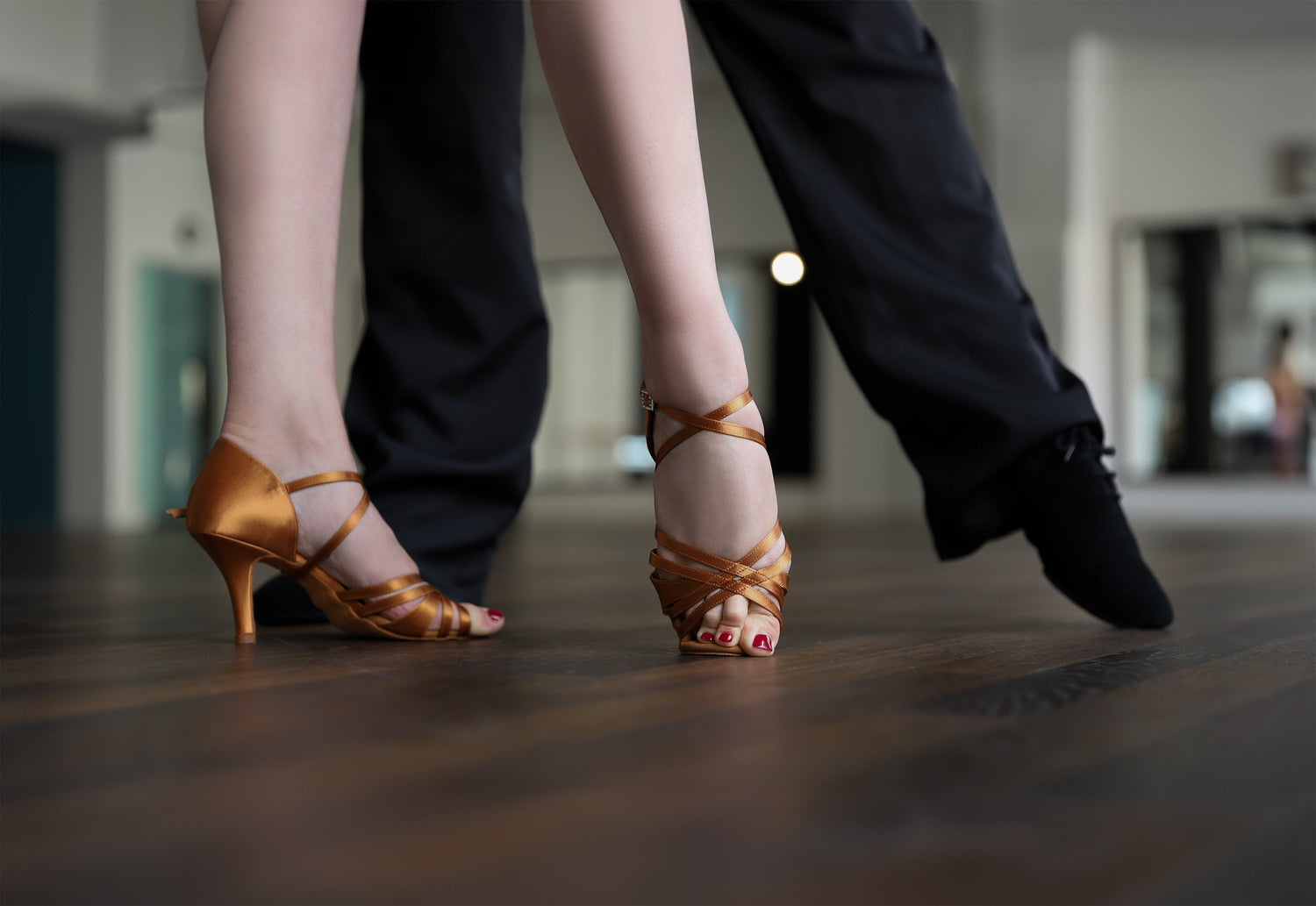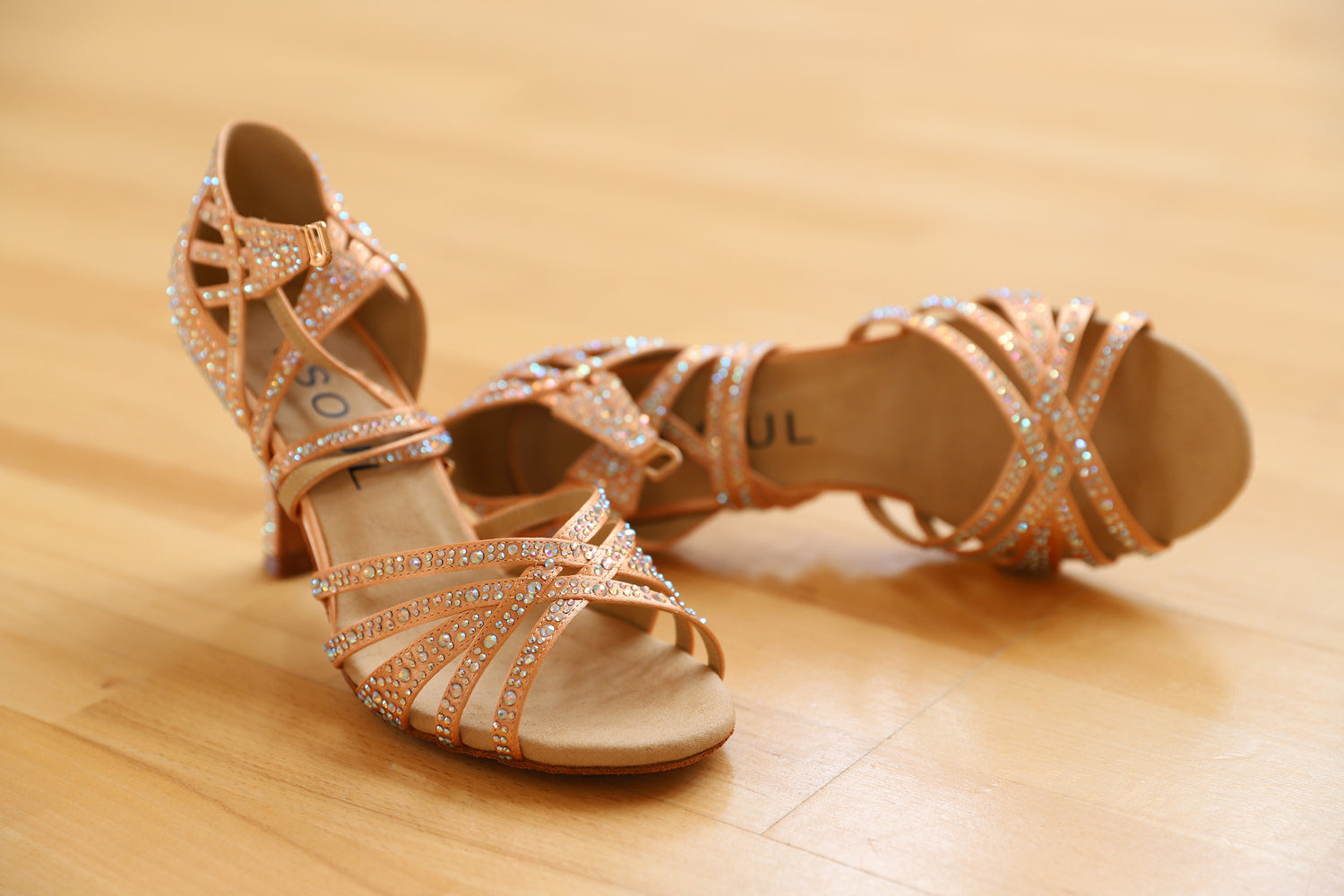The choice of the right dance shoes is of utmost importance for professional competitive dancers. They must not only be comfortable and functional but also support the dancer's movements optimally to allow for maximum expression and precision on the dance floor. In this article, we take a look at the key factors to consider when choosing dance shoes for competitive dancers.
- Fit and Size
One of the most crucial considerations when selecting dance shoes is the fit. Competitive dancers typically prefer shoes that fit snugly, feeling like a second skin. This provides more control and precision with every movement. Especially in Latin dance, many dancers choose a size smaller than their regular shoe size to achieve a better fit and stability.
- Toes Touching the Floor
In women's Latin dance, it is typical for the toes to almost or completely touch the floor. This may seem unusual to those unfamiliar with the sport, but it is a deliberate choice by the dancers. This position allows the body weight to be shifted forward, which is crucial for the dynamics, expressiveness, and precision of the movements. The contact of the toes with the floor contributes to stability and aids in quick reactions to the floor, which is beneficial for complex figures and rapid turns.
It is important to emphasize that choosing a smaller size and having the toes almost touching the floor means making the right size choice, not that the shoes are too small. The shoes are designed to support the foot optimally while providing the necessary flexibility. A snug fit ensures that the toes can work stably and controlled, without slipping backward when pointing, which is essential for controlling and performing precise movements.
For men as well, it is often the case that shoes should fit more tightly in Latin dance. A snug fit ensures the foot is optimally stabilized, allowing the dancer to maintain maximum control over their movements. The shoe should hold the foot well to support precise steps and clean lines without limiting the flexibility needed for powerful and expressive movements.
- Flexibility of the Sole
Another important factor when choosing dance shoes is the flexibility of the sole. In both Latin and Standard dance, it is crucial that the shoes have a flexible sole that supports the natural movement of the foot. A flexible sole allows dancers to move effortlessly across the floor and perform precise footwork. It provides the necessary grip while ensuring that the mobility of the foot is not restricted.
- Heel Height and Shape
The shape of the heel plays a central role in the choice of dance shoes, as it significantly affects stability, balance, and aesthetics. In Latin dance, slim heels – narrow, higher, and more elegant heels – are often preferred, as they emphasize the aesthetics of the movements and elongate the line of the leg. However, many dancers also opt for a flare heel. This slightly wider shape offers more stability and is particularly appreciated during intense spins and fast movements.
For Standard dances, flare heels and lower, wider heels are more common. These provide additional balance, which is necessary for the slow, gliding movements and often quieter figures in Standard dance.
For men, the heels are flatter and more subtle. However, they are specifically designed to ensure optimal control and an upright posture in the dance.
Young girls typically wear dance shoes with a block heel, providing extra stability and supporting the development of their technique. Block heels offer a wider surface area and prevent ankle twisting, which is especially beneficial for beginners and young dancers.
Conclusion
Choosing the right dance shoes for professional dancers is a combination of personal preference, functional requirements, and aesthetic considerations. A snug fit, flexible sole, the right heel height and shape, and the conscious choice for toes to almost touch the floor are all crucial factors for a successful dance performance. While these details may seem unusual to those unfamiliar with the dance sport, they are of the utmost importance for dancers to perform at their best and showcase their movements to perfection on the floor.





